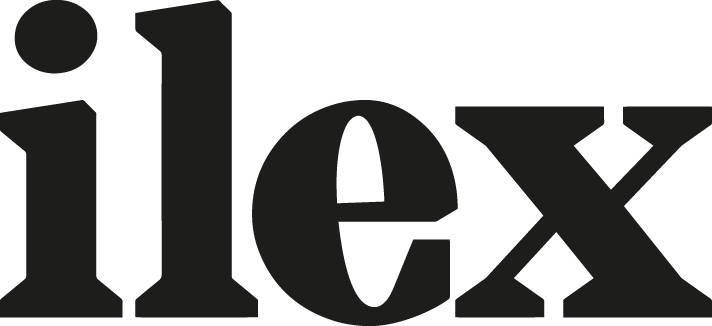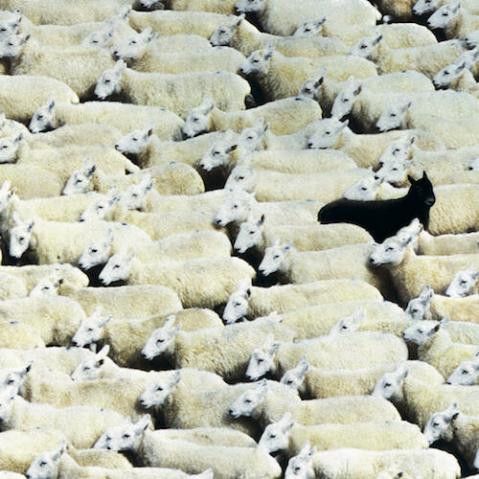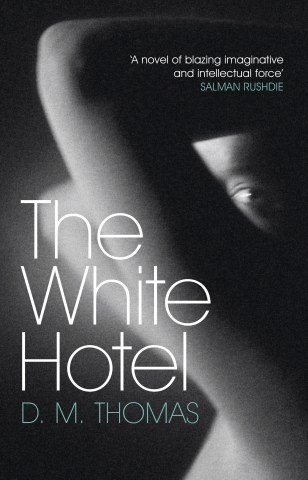Laura El-Tantawy: The Freeman Interview
 Laura El-Tantawy
Laura El-Tantawy
Interviewed by Michael Freeman
Freeman Interviews with big names in photography will be published here regularly; sign-up for our newsletter to be the first to know.
Laura El-Tantawy was born in Worcestershire, England and grew up between Cairo, Egypt and Dammam, Saudi Arabia. She graduated from the University of Georgia in Athens, GA (USA) with a dual degree in journalism and political science, worked as a staff photographer with the Milwaukee Journal Sentinel in Milwaukee and the Sarasota Herald-Tribune in Sarasota, Florida, before becoming a freelance photographer in 2005. Having her roots in newspaper photography has played a critical role in shaping her development because the simple nature of being a newspaper photographer — covering a wide range of assignments, including sports, spot news, business portraits and feature hunting – stimulates flexibility, creativity and a mind set where the photographer has to make a picture regardless of the situation he or she is in. That said, El-Tantawy has used this experience rather unusually for a photojournalist in developing a distinctive, experimental style that is still evolving. She sees this pitched between fine art and documentary photography. As she says, “I very much embrace the concept of being different and innovative and this is probably at the very core of ‘the look’ in my pictures.”
Pic: portrait by MF
In 2008 she was selected as one of 10 photographers to be awarded a spot in Reflexions Masterclass, a two-year photography master program directed by Italian photographer Giorgia Fiorio and French curator Gabrial Bauret. In 2009, she completed a research fellowship at the University of Oxford’s Reuters Institute for the Study of Journalism where she explored the concept of freedom of expression in contemporary Egyptian media and the role played by Internet bloggers and independently published newspapers to push the boundaries of free speech in Egypt.
El-Tantawy’s work has been published in National Geographic Magazine, Harper’s, Saudi Aramco World Magazine, The Guardian, Thailand: 9 Days in the Kingdom, Bangkok 101 as well as several online publications. She lives between London and Cairo, where she associates most of her childhood memories.



MF:
How and why did you get started in photography?
LET:
The why and how were a complete surprise. I was studying journalism to be a reporter, as well as doing another degree in political science, and I thought I’d take a photography course that was being offered at the university, just for fun — an easy three credits towards my graduation. This was at the University of Georgia, in Athens, near Atlanta. It’s one of the top schools for journalism, but it had no particular speciality for photojournalism. However, unusually for that year it happened to get a professor from a newspaper, Jim Virga, who had a hard-core photojournalism background. He actually instilled in me all the basics, and had a tremendous influence on me.
MF:
And with that introduction, what specifically tipped you away from writing to photography?
LET:
I do have to clarify that even up to this stage I was still not taking it very seriously. What made it serious for me was the Poynter Institute. I’d put it at the same level as the Reuters Institute for Media Studies at Oxford. I applied for a post-graduate course there and they offered me the choice of either writing or photography; I decided to go for the photography.
MF:
Has your style changed since then?
LET:
Absolutely.
MF:
In what way? What was it before, and where is it moving now?
LET:
At that time, it was more along the path of photojournalism. I don’t think it was as experimental and border-fine art/border-documentary as it is now.

MF:
So, more to do with clarity and narrative then than now?
LET:
Yes, certainly. But I think there was a little of that experimental side to it even then, though I hadn’t thought about it consciously. In my last job in the US, at the Sarasota Herald Tribune in Florida, I was in some degree of conflict with my Director of Photography, Mike Lang, because he thought my work was a bit too abstract for what the readers could absorb or for what they expected to see.

MF:
Well, I could see that for hard, concrete reporting, a director of photography might well want clarity and narrative first and foremost.
LET:
I think it’s a bit tricky when you’re working for newspapers. It’s a very good start for anyone beginning photography, by the way, because you get to do all these different aspects of photography. But it also depends on the leadership, because you can have somebody in charge who sees that maybe there’s a potential in what your trying to do and can direct you, or you can have someone who has a very firm idea of what readers expect to see.


MF:
Your style is very identifiable, and in many ways a challenge to classical approaches. In the selection of images here, you’re making use of reflections to marry different layers of a scene, unexpected focus, idiosyncratic framing, motion blur and unusual light. I realise that sounds a bit too much like a list, but what ties them together is that they all have a sense of experiment.
LET:
One thing is that personally I find it very boring to repeat myself, so I always try and do something different. That means different for me, by the way, not different from other photographers. When I’m photographing, I never compare myself with other people’s work. I never say to myself, “Oh, I saw someone’s picture like that, I’m going to do it differently.”
It varies between night pictures and daylight situations. The camera movement is something I can more easily work with in low light, but in daylight I’m more intrigued by harsh light. I like the difference between harsh light and sudden shadow, like the way a band of hard light falls across just part of someone’s face. I think it makes for very interesting compositions and it makes pictures intriguing.


MF:
I’d say that intrigue certainly comes through in most of your images.
LET:
A large part of it has to do with the element of mystery, which psychologically I’m drawn to. With my kind of photography I don’t want to answer a lot of questions. I want to engage the people who look at the picture and provoke them into saying, “What is she trying to do? What am I really looking at ?” I like to engage viewers into thinking beyond what they’re seeing. Of course, when I’m actually taking a picture, I’m not at that moment motivated by how others will see it. I don’t set out deliberately thinking that I’m going to purposefully not show that person’s face; it’s just the kind of thing that pulls me visually when I’m shooting, those kind of moments and that kind of light. These are the things that appeal to me, and they involve question marks and suggestion.
In any case, my style is still evolving, so I think there’s still some inconsistency between some of the approaches.
MF:
Now, I met you first on the Thailand book 9 Days in the Kingdom. Wasn’t it through David [Allan Harvey] that you joined the project?
LET:
Yes, he recommended me. He had an influence on my work because of the way he deals with people when he’s out in the field. He’s very modest, and he always gives to people as much as takes photographically — attention and interest and respect. As a photographer you walk into a lot of situations, and even I sometimes forget just how rare it is and what a privilege it is to be in that situation.
My assignment was to photograph festivals, so it was a dream assignment. I could do it in any way I wanted. The girls here were performers preparing for a parade, and they were in traditional costume. The first one was applying some make-up; she’s holding up a hand-mirror to put on lipstick, and that’s a drawing on the back of it.
The experience in Bangkok was a once-in-a-lifetime thing. I was the youngest of 55 photographers, most of whom are renowned world-wide, and the youngest of the only three women on the project. It was a lot of work but I enjoyed every bit of it and the overall experience was nothing short of rewarding, educational and enjoyable in every way.




MF:
Which other photographers have had an influence?
LET:
I have a really small photography book collection, and I say small by comparison to every other photographer I have ever known and seen his or her book collection. The very first photography book I ever purchased was Steve McCurry’s “Portraits”. I immediately fell in love with McCurry’s vibrant colors and really respect how he maintained people’s dignity in the pictures. He was always an influence because a lot of his work was in India, and I think I fell in love with India through his work. And also, I’m a colour photographer and I find his colours extremely rich, and there’s always so much going on in colour in his pictures. Every now and then I go back and look through this book. Other people I really like are Michael Ackerman, Rebecca Norris Webb and Gueorgui Pinkhassov, all of whom have a unique perspective that always surprises. I find this most interesting because they all photograph daily happenings, a man walking on the street, a lion in a cage or a bouquet of flowers, but with their distinct vision they make it into so much more.
MF:
I can certainly see the correspondence with Pinkhassov’s work.
LET:
Yes, with Pinkhassov, I love his vision. It’s simple, and it’s new and always surprising.
MF:
In general, life in photography is not getting any easier financially. How do you support yourself?
LET:
At the moment I do part-time work as a television producer but I would really like to drop everything and just work on photography, more assignments and commissions.
MF:
And you have a new major project?
LET:
My one and only interest, as I think you can see, is photographing people. I am very interested in social issues and as of late, I have developed a major interest in women’s issues, which totally took me by surprise. I remember a few years ago someone told me, Laura, listen, you are an Arab woman, a Muslim, you have lived in the west, you understand both sides of the world, you should do something on women! At the time the idea really didn’t settle with me and I couldn’t find any subject that incited any strong feelings in me. But in the last year I stumbled across something and it has really dragged me along. I am now working on something that is both personal and general and that is very relevant to me and I like to think to any Muslim woman.


The project I’m working on now is about the Veil. It started with nothing, just me going on an assignment to Iran last year, where I wanted to do a project on the young generation, and the conflict between sticking with the regime of the Islamic Republic and a more Western dream. When I looked at all the pictures together, I realised that there was a theme emerging. I think psychologically I was always photographing around that subject but hadn’t realised it. Living in the West, I see sometimes a misconception of the veil, or hijab, as a symbol. In my family, it’s a symbol of modesty, it’s something that a woman has always done by her own choice. Once they have put on the veil, it doesn’t stop them from doing the things that they were doing before. So if a woman was working before, when she puts on the veil it doesn’t mean that she’s taken a decision to stay at home. The true meaning for me of the veil is that it’s about modesty.
MF:
And the misconception that you sometimes see here?
LET:
I think this derives from a minority of Muslim countries — Afghanistan, Iran and Saudi Arabia. The Muslim world doesn’t end with just these countries, particularly an extreme regime like Afghanistan.
MF:
And how did the original Iran trip work out?
LET:
It didn’t. In fact it went very badly at the end. That was purely because a bit of inexperience on my part. I didn’t calculate all the things that could potentially go wrong, and so I was taken and interrogated by the Foreign Office in Tehran. They were very suspicious about why I was there and what I was doing, that I was there on a tourist visa, and my background of living in America. They told me to leave the country in 48 hours.

MF:
So, back to your very identifiable style — can I call it oblique?
LET:
I generally feel that a photographer’s work is a window to their personality. I particularly felt this in my work when I started to analyze my choice of subjects, especially in the last couple of years. Growing up in a culture that sets a lot of weight on family values, tradition and on the obvious realities of life rather than the fantasy of dreams, photography has been the only way for me to hide away from all these issues. It really became the only way I can be away from the expectation and delve into my own dream world. Maybe this explains the look in my pictures, a sort of mysterious feel – as one would remember visions from a dream.
As I mentioned earlier, I don’t go out and seek that look, I really think this process is psychological. From the starting choice of camera format, color or black and white, composition and of course, the crucial choice of subject, the photographer’s personality is there. I don’t know if I can apply this concept across all genres of photography (especially to sports and conflict photography) but I can certainly say this is true of my work. I will never photograph anything that does not trigger a feeling in me.

[one_whole boxed=”true”]
Find out more
The publishers of Thailand: 9 Days in the Kingdom have put up a movie of you working in Bangkok on YouTube.
[button open_new_tab=”true” color=”Accent-Color” size=”medium” url=”http://www.youtube.com/watch?v=wIq3QrZnmYQ ” text=”See Publisher’s Video”][button open_new_tab=”true” color=”Accent-Color” size=”medium” url=”http://www.lauraeltantawy.com/index.php” text=”Laura’s website”]
[/one_whole]


